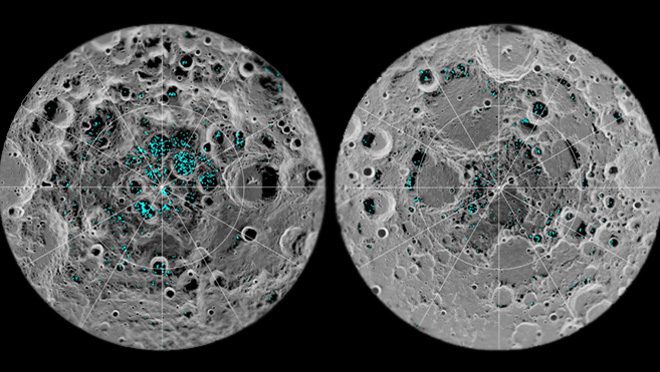A team of scientists, led by Shuai Li of the University of Hawaii and Brown University, and including Richard Elphic from NASA’s Ames Research Center in California’s Silicon Valley, has used data from NASA’s Moon Mineralogy Mapper (M3) to identify three specific signatures that definitively prove the presence of water ice on the surface of the Moon. The water ice is spread near the darkest and coldest regions of the lunar poles, in the shadows of craters, which have never received any sunlight due to a small tilt of the Moon’s rotation axis, with the warmest temperatures of these regions never reaching above -250 degrees Fahrenheit.
The distribution of the ice concentrates in the lunar craters of the South Pole, while the North Pole has a more widely but sparsely spread layer of ice. M3, aboard the Chandrayaan-1 spacecraft, was launched in 2008 by the Indian Space Research Organization (ISRO). The instrument was well equipped to confirm the presence of ice on the Moon; and as such it has collected data that picked up the reflective properties expected from ice, along with directly measuring the distinctive way the ice molecules absorb infrared light, in order to distinguish between liquid water, water vapour, and solid ice.


The future missions of NASA and its commercial partners shall focus on exploring more facts about the water ice – how it got there and how it interacts with the lunar environment at large. The Chandrayaan-1 spacecraft findings have been published in the Proceedings of the National Academy of Sciences on August 20, 2018.




